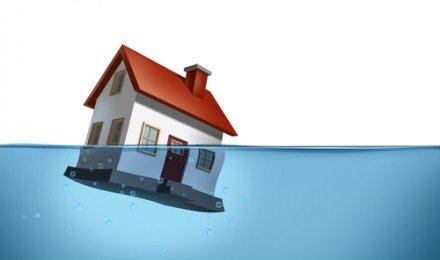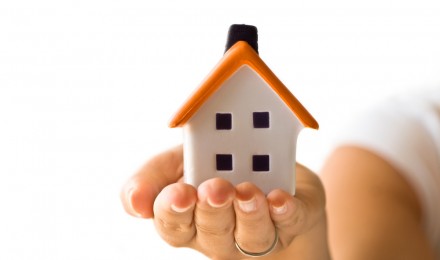If you owe more on your home mortgage than your house is worth, you are in a difficult position. Referred to as being “underwater,” you can’t sell your house in this situation unless the lender agrees to a short sale or unless you can bring cash to the table. You also may not be able to refinance an underwater mortgage using conventional refinancing methods. Since your home is the collateral used to guarantee your mortgage, you cannot refinance into a new loan when you are underwater since you have insufficient collateral.
Unfortunately, sometimes you need to refinance an underwater mortgage. This is especially true if your mortgage payments are not currently affordable and refinancing to a lower interest rate could bring your payments back down to an amount you can pay. Refinancing also becomes essential if you have an adjustable rate mortgage and your rate has adjusted up or is scheduled to adjust up to an amount that will put your payments out of reach.
Fortunately, if you find yourself in a situation where you need or want to refinance an underwater mortgage, you do have some options. Several of these options exist as part of a government program called Making Home Affordable (MHA). Other options may be available from the Federal Housing Authority (FHA) or from a program offered through your lender.
Federal Programs to Help You Refinance
When your mortgage is underwater, there are two different possible programs available through Making Home Affordable that can help you to refinance your home. These programs are:
- The Home Affordable Refinance Program (HARP)
- The Home Affordable Modification Program (HAMP)
In addition to the programs under MHA, you may also choose to explore an FHA streamline refinance if you are current on your payments and if you have an FHA mortgage.
The HARP Program to Refinance an Underwater Mortgage
The HARP program allows any homeowner who is underwater to refinance an underwater mortgage into a lower rate mortgage. The program does not require you to show financial hardship, nor is it limited to people in danger of foreclosure. In fact, you cannot be behind on payments to join this program. In many ways, the HARP program is similar to a conventional refinance loan, except you need to participate in the government program to get the refinance approved since you are underwater.
Participation in the HARP program requires that you meet certain basic eligibility requirements including:
- Owning a property that has four or fewer units and that is your primary residence;
- Having a mortgage backed by either Fannie Mae or Freddie Mac;
- Being current on your mortgage with no payments more than 30 days delinquent in the preceding 12 months;
- Having a mortgage that is not greater than 125 percent of your home’s current market value;
- Providing proof of income showing you can pay the new mortgage payment; and
- Demonstrating that the affordability and stability of your home will be improved over the long term by a refinance.
To apply for the HARP program, you may contact your own lender or any lender who offers Fannie Mae or Freddie Mac guaranteed loans. When you speak with your lender, ask for an application for the HARP program to refinance an underwater mortgage. More information can also be found about this program at the Making Home Affordable Program website or in the PDF brochure for the program.
The HAMP Program
The HAMP program is different from the HARP program because it caters to those who are experiencing financial hardship and/or who are at risk for foreclosure. It is different than a standard refinance program because it doesn’t simply let you take out a new mortgage at a lower interest rate. Instead, HAMP will reduce your monthly mortgage payment to 31 percent of your pre-tax income, making your payments affordable to you and helping you to refinance an underwater mortgage.
Like HARP, there are certain basic eligibility requirements you must meet including:
- Owning a property that has between one and four units and that is your primary residence;
- Having a total mortgage payment (taking into account principle, interest, homeowner’s association dues, taxes and insurance) that is greater than 31 percent of your pre-tax income each month; and
- Owing $729,750 or less on your first mortgage (higher limits are available if the property is a two, three or four unit property).
When you enter the HAMP program, you must successfully complete a 3-4 month trial period during which you prove you are able to make your lower payments in a timely manner before you are granted permanent modification of your mortgage. If you are able to complete the trial, your mortgage will be permanently modified to lower your payments. To help refinance an underwater mortgage, this may involve a rate reduction (rates can go as low as 2 percent); an extension of your mortgage repayment term to up to 40 years; a period of forbearance or deferral where you temporarily take a break from making payments; or forgiveness of a portion of the original loan at the discretion of your lender. You can also earn incentives each month that on time payments are made, up to $1,000 annually and $5,000 total.
The term of the modified interest rates will be included in your modification agreement and must be fixed for no less than 5 years. After the five year period, your lender can increase your rate up to 1 percentage point each year until it reaches the current market interest rate as determined by Freddie Mac surveys.
More information about HAMP can be obtained through the same website and brochure as the sites providing details about HARP. You may also get help by calling 1-888-995-HOPE.
If you owe more on your home mortgage than your house is worth, you are in a difficult position. Referred to as being “underwater,” you can’t sell your house in this situation unless the lender agrees to a short sale or unless you can bring cash to the table. You also may not be able to refinance an underwater mortgage using conventional refinancing methods. Since your home is the collateral used to guarantee your mortgage, you cannot refinance into a new loan when you are underwater since you have insufficient collateral.
Unfortunately, sometimes you need to refinance an underwater mortgage. This is especially true if your mortgage payments are not currently affordable and refinancing to a lower interest rate could bring your payments back down to an amount you can pay. Refinancing also becomes essential if you have an adjustable rate mortgage and your rate has adjusted up or is scheduled to adjust up to an amount that will put your payments out of reach.
Fortunately, if you find yourself in a situation where you need or want to refinance an underwater mortgage, you do have some options. Several of these options exist as part of a government program called Making Home Affordable (MHA). Other options may be available from the Federal Housing Authority (FHA) or from a program offered through your lender.
Federal Programs to Help You Refinance
When your mortgage is underwater, there are two different possible programs available through Making Home Affordable that can help you to refinance your home. These programs are:
- The Home Affordable Refinance Program (HARP)
- The Home Affordable Modification Program (HAMP)
In addition to the programs under MHA, you may also choose to explore an FHA streamline refinance if you are current on your payments and if you have an FHA mortgage.
The HARP Program to Refinance an Underwater Mortgage
The HARP program allows any homeowner who is underwater to refinance an underwater mortgage into a lower rate mortgage. The program does not require you to show financial hardship, nor is it limited to people in danger of foreclosure. In fact, you cannot be behind on payments to join this program. In many ways, the HARP program is similar to a conventional refinance loan, except you need to participate in the government program to get the refinance approved since you are underwater.
Participation in the HARP program requires that you meet certain basic eligibility requirements including:
- Owning a property that has four or fewer units and that is your primary residence;
- Having a mortgage backed by either Fannie Mae or Freddie Mac;
- Being current on your mortgage with no payments more than 30 days delinquent in the preceding 12 months;
- Having a mortgage that is not greater than 125 percent of your home’s current market value;
- Providing proof of income showing you can pay the new mortgage payment; and
- Demonstrating that the affordability and stability of your home will be improved over the long term by a refinance.
To apply for the HARP program, you may contact your own lender or any lender who offers Fannie Mae or Freddie Mac guaranteed loans. When you speak with your lender, ask for an application for the HARP program to refinance an underwater mortgage. More information can also be found about this program at the Making Home Affordable Program website or in the PDF brochure for the program.
The HAMP Program
The HAMP program is different from the HARP program because it caters to those who are experiencing financial hardship and/or who are at risk for foreclosure. It is different than a standard refinance program because it doesn’t simply let you take out a new mortgage at a lower interest rate. Instead, HAMP will reduce your monthly mortgage payment to 31 percent of your pre-tax income, making your payments affordable to you and helping you to refinance an underwater mortgage.
Like HARP, there are certain basic eligibility requirements you must meet including:
- Owning a property that has between one and four units and that is your primary residence;
- Having a total mortgage payment (taking into account principle, interest, homeowner’s association dues, taxes and insurance) that is greater than 31 percent of your pre-tax income each month; and
- Owing $729,750 or less on your first mortgage (higher limits are available if the property is a two, three or four unit property).
When you enter the HAMP program, you must successfully complete a 3-4 month trial period during which you prove you are able to make your lower payments in a timely manner before you are granted permanent modification of your mortgage. If you are able to complete the trial, your mortgage will be permanently modified to lower your payments. To help refinance an underwater mortgage, this may involve a rate reduction (rates can go as low as 2 percent); an extension of your mortgage repayment term to up to 40 years; a period of forbearance or deferral where you temporarily take a break from making payments; or forgiveness of a portion of the original loan at the discretion of your lender. You can also earn incentives each month that on time payments are made, up to $1,000 annually and $5,000 total.
The term of the modified interest rates will be included in your modification agreement and must be fixed for no less than 5 years. After the five year period, your lender can increase your rate up to 1 percentage point each year until it reaches the current market interest rate as determined by Freddie Mac surveys.
More information about HAMP can be obtained through the same website and brochure as the sites providing details about HARP. You may also get help by calling 1-888-995-HOPE.






